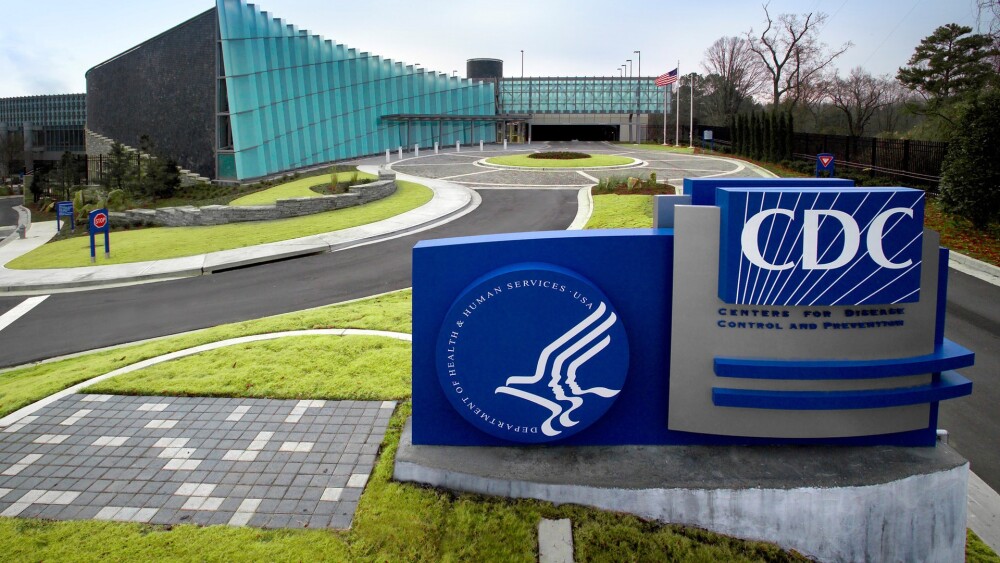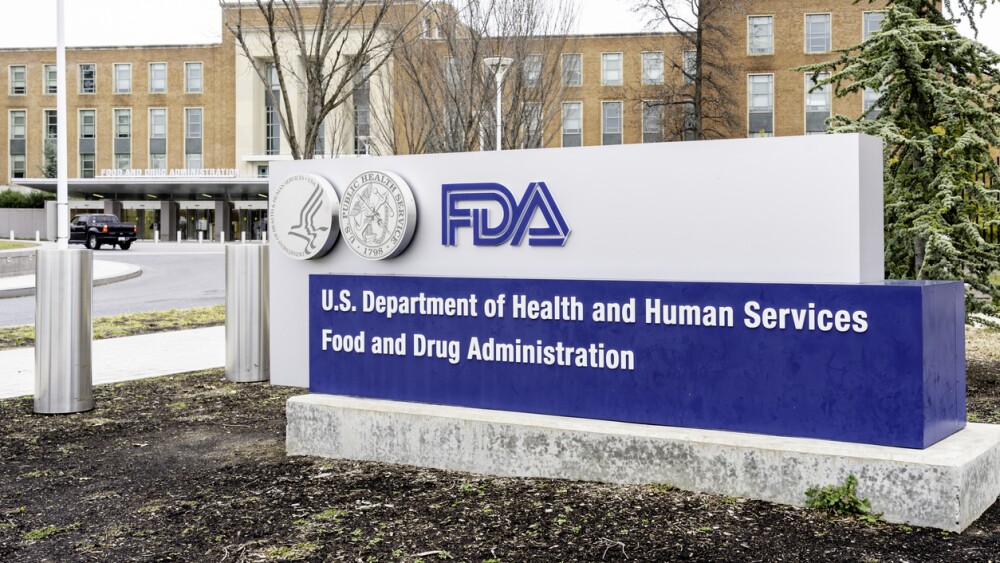Earlier this summer the FDA asked Moderna for more efficacy data on its flu vaccine before it could review an mRNA-based combination shot that targets both influenza and COVID-19. Now, the entire vaccine sector is sizing up a new regulatory world, companies’ next steps uncertain.
In late May, Moderna surprised many by pulling the application for its combination influenza/COVID-19 vaccine. At the time, the company said it had made the move after discussions with the FDA.
Moderna had initially planned on an approval for the combo shot, called mRNA-1083, in time for the fall 2025 flu season. The company pushed back that estimate to 2026 during its Q1 earnings call in May before withdrawing the biologics license application (BLA) before the month’s end. Moderna said it would resubmit later this year when it had efficacy data for the flu component—data the company has since released. In late June, Phase III results showed the immunization beat current standards by 26.6% at preventing disease in adults aged 50 years or older.
Moderna’s flu-COVID combination vaccine is furthest along in development, but Pfizer, Novavax and GeoVax also have combo candidates in the pipeline—with a path to market that is growing more and more unclear.
In the past few months, the FDA has made several announcements about how it will approve new vaccines and seasonal updates, including requiring a saline placebo in clinical trials and requiring efficacy data, rather than just immunogenicity data. The industry is also dealing with a still relatively new disease in COVID-19 and novel technology in mRNA, which analysts have identified as a potential target of the current Department of Health and Human Services under Secretary Robert F. Kennedy Jr.
Vaccine makers are thus advancing their work under a cloud of uncertainties: How are seasonal COVID-19 vaccines being approved now that they’ve moved past emergency authorizations and into regular approvals? Will mRNA vaccine technology be held to a different standard from other modalities? Are Kennedy’s views on antigens or the FDA’s placebo requirement obstacles that need to be considered?
“It’s a lot of moving parts, purely from a regulatory point of view,” Myles Minter, analyst at William Blair, told BioSpace.
Evolving Hurdles
Early in July, Moderna won FDA approval for Spikevax, its COVID-19 vaccine originally available under emergency use, for all adults at least 65 years old and younger patients (down to six months) at increased risk. The restricted label came from Center for Biologics Evaluation and Research director Vinay Prasad, who overruled FDA reviewers to keep healthy children and adults off its label. This decision followed a similar one the previous month, when the FDA granted market approval to Moderna’s next-gen COVID vaccine mNEXSPIKE for the same restricted population.
Now, the company has efficacy data for its influenza vaccine, mRNA-1010, which is combined with antigens from mNEXSPIKE for the flu-COVID combination. That could prime the company to resubmit its combo application to the FDA, Minter said. “It’s clear for Moderna that the FDA wants to see flu efficacy data, which we have now, at least for older adults. My sense is that [Moderna has] everything they need to file with the FDA.”
Moderna has not yet announced a BLA resubmission and declined to comment for this article.
One consideration is that the company uses a still relatively novel technology and lacks the full picture for a broader population. The data submitted to the agency shows only a rise of antibodies following immunization, not actual protection from disease, across all adults. Updated seasonal vaccines that used the same old protein-based technology year after year have in the past required only immunogenicity evidence for approval, but mRNA is a new technology altogether, with no mRNA-based flu vaccine currently on the market.
“There’s no formally written guidance on mRNA,” Minter said, “only Prasad saying ‘we’re comfortable with seasonal vaccines,’ but we don’t know anything about how [updating for] seasonal strains works with respect to mRNA.”
Moreover, with regard to immunogenicity data supporting approvals, Prasad and FDA commissioner Marty Makary said such evidence would be sufficient for approval only in high-risk populations, Minter noted. Makary and Prasad made these remarks in a New England Journal of Medicine article that outlined what the FDA wanted to see in vaccine data and trial designs in the future. In healthy populations, the pair wrote, the FDA would need to see efficacy data from randomized and placebo-controlled trials. Moderna’s recent flu vaccine trial, for example, was not placebo-controlled, instead comparing the new vaccine to a previous generation shot—what experts previously told BioSpace is the most ethical option when marketed vaccines exist.
The stricter guidance has already played out with Novavax, whose protein-based COVID vaccine was recently approved for a similar population as Moderna’s shot. Full approval for the company’s Nuvaxovid, initially approved under Emergency Use Authorization, was delayed and the ultimate greenlight was for all adults at least 65 and for those 12 and up who are at greater risk of disease.
“That was a surprise. We don’t like surprises,” Silvia Taylor, executive vice president at Novavax, told BioSpace. “I think it was a matter of timing. April 1 was our PDUFA and that was the date that Prasad started. It makes sense that somebody new comes in and says, ‘hold on, I have an opinion here.’ I think it was just bad luck.”
Last month, Novavax touted the Phase III efficacy of its flu-COVID combo but has decided to pause work on that vaccine until it can find a development partner. The company’s COVID-19 vaccine partner Sanofi is using Novavax’s Matrix-M adjuvant in two flu/COVID-19 combo vaccines, however, so “[we have] multiple shots on goal,” Taylor said.
GeoVax, which makes vaccines with virus-like particles, is similarly holding on its flu-COVID combination vaccine for now, instead prioritizing individual shots for now. “We see a combo flu/COVID vaccine as a 4-5 antigen vaccine,” GeoVax CEO David Dodd told BioSpace.
Dodd raised an additional layer of uncertainty facing vaccine developers—one that he is confident GeoVax is prepared to address—and that is Kennedy’s views on single-antigen vaccines, which elicit antibody responses against only a single target. In the past, the Health secretary has claimed such vaccines do not work. An upswell of vaccine experts have all said Kennedy’s assertions are not true, but the secretary has made clear his preference for multi-antigen vaccines, which produce antibodies against multiple parts of a virus.
“The issues around multiantigen vaccines versus single antigen vaccines we started mapping after the election,” Dodd told BioSpace.
Moderna’s combination vaccine is a single molecule that contains antigens from both of its already approved influenza and its mNEXSPIKE COVID-19 vaccines. Similarly, GeoVax’s COVID-19 vaccine uses multiple antigens to protect against the virus. According to Dodd, this presents an easier regulatory road for the company itself and gives HHS and the FDA exactly what it wants.
“Our focus is not to engage regulatory agencies on combo vaccines, like mixing two vaccines, but instead as a multi-antigen approach, which we believe is preferred by the current leadership.”
Navigating the Path Forward
For flu-COVID combos and all other vaccines, Taylor stressed that frequent communication with drug regulators at HHS and the FDA has helped Novavax plot its course. “We have seen a lot from this admin on what they view as an adequate risk/benefit equation.”
Dodd concurred. “We’ve been in continuous discussions with the new administration even before inauguration,” he said in an interview. “We started mapping out what we saw as expressed viewpoints and rhetoric, around issues of production in the US” and becoming less dependent on other countries for manufacturing needs. “Our philosophy is very simple: regardless of what one’s political views might be, at the end of the day all of us in the industry have to work in the environment that we have.”
Vaccine makers are thus jockeying to make sure they align with an evolving regulatory reality. For flu-COVID combo shots, this also includes Pfizer, whose combination shot failed to beat previous generation flu vaccines’ immunogenicity last summer. The company said then that it is discussing next steps with regulators.
While the speedbumps are many, Minter said, in the long term he doesn’t foresee major roadblocks. Ultimately, “data is the data,” he said. “One consistent message from Prasad: if you do the trial and show it works in the target population you’re asking for approval for, we’re going to review the data.” For Moderna’s flu-COVID combo, he added, “I have to assume that ends in approval.”






